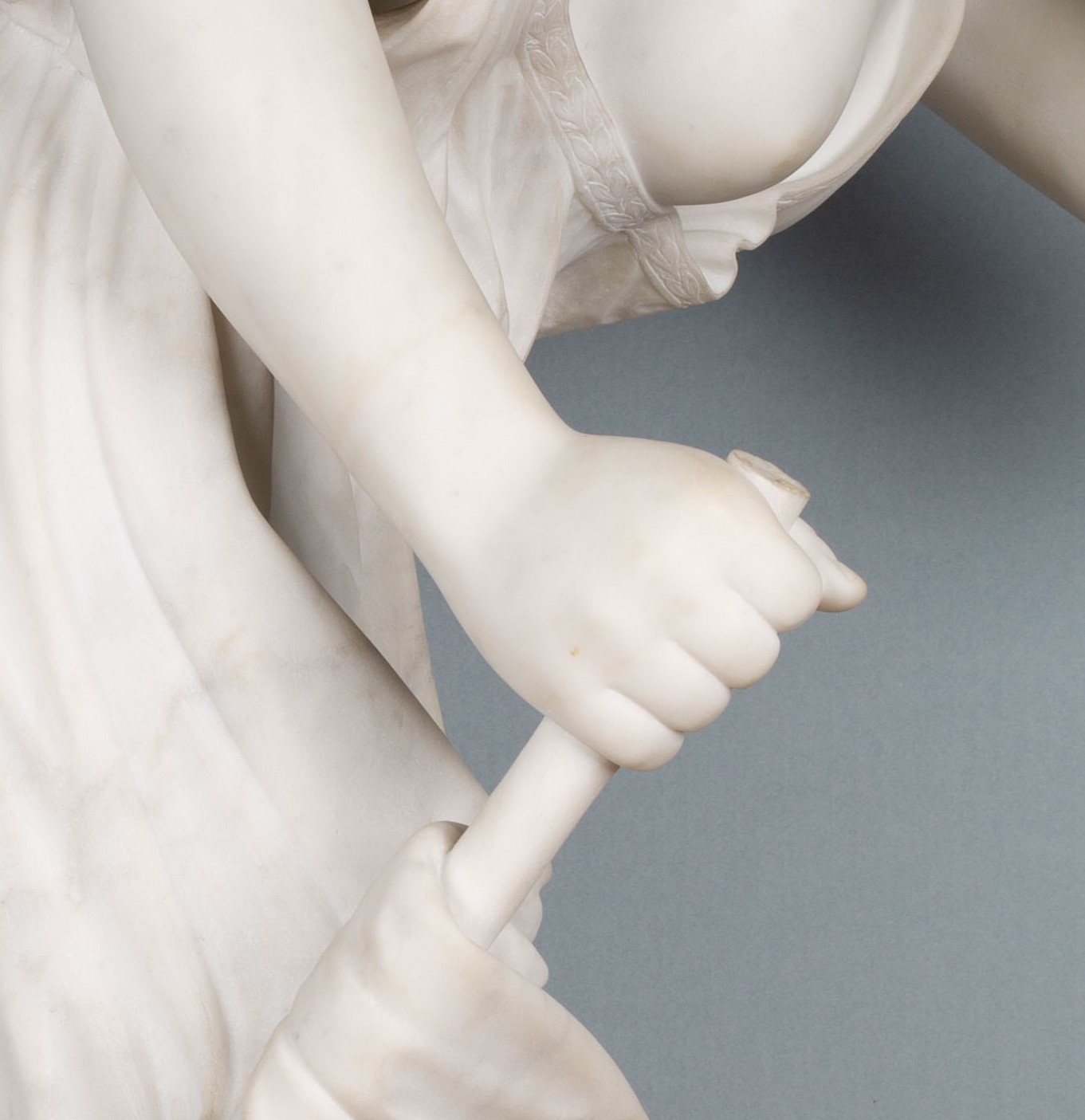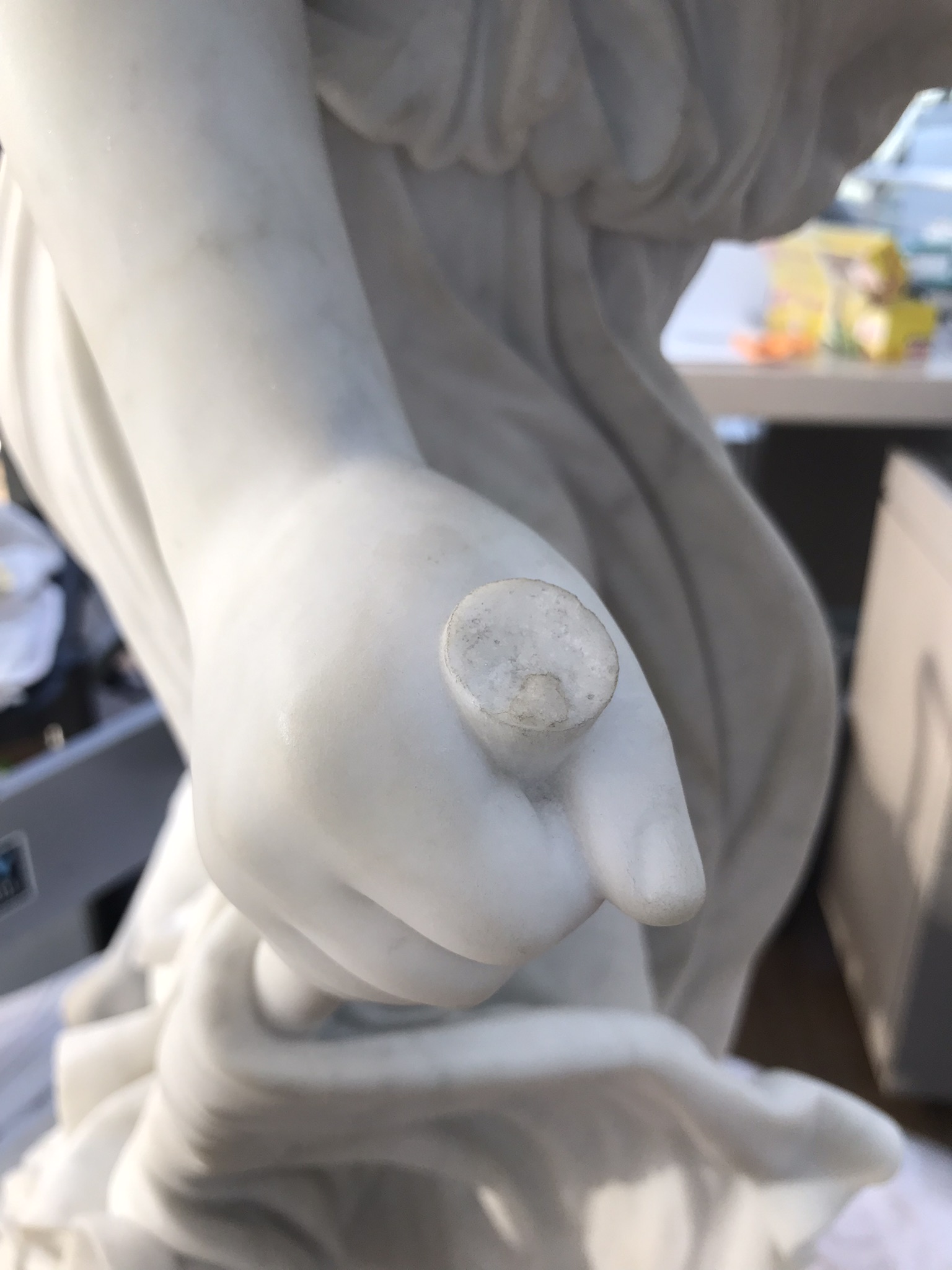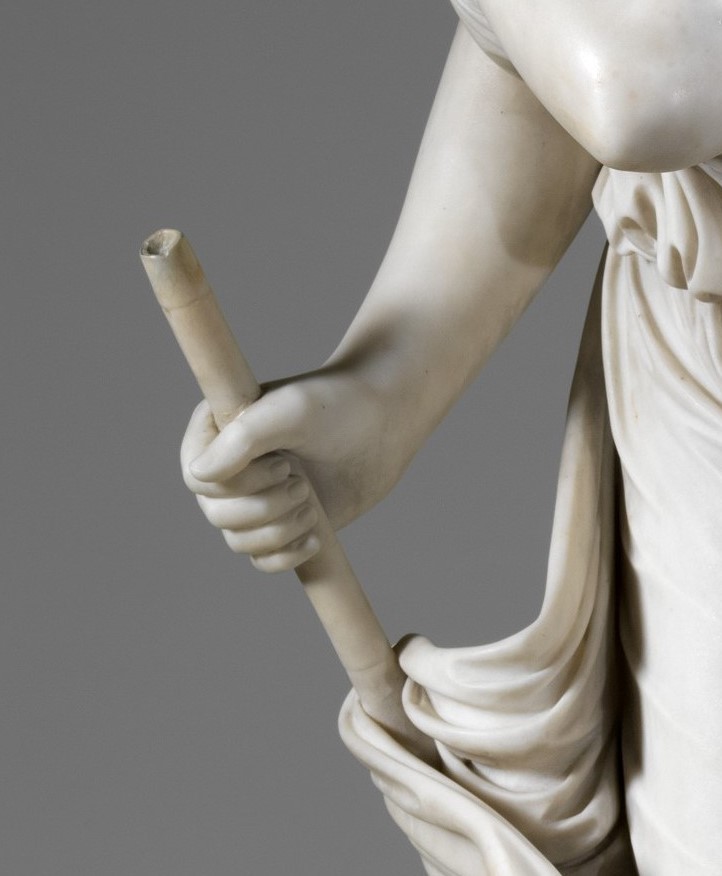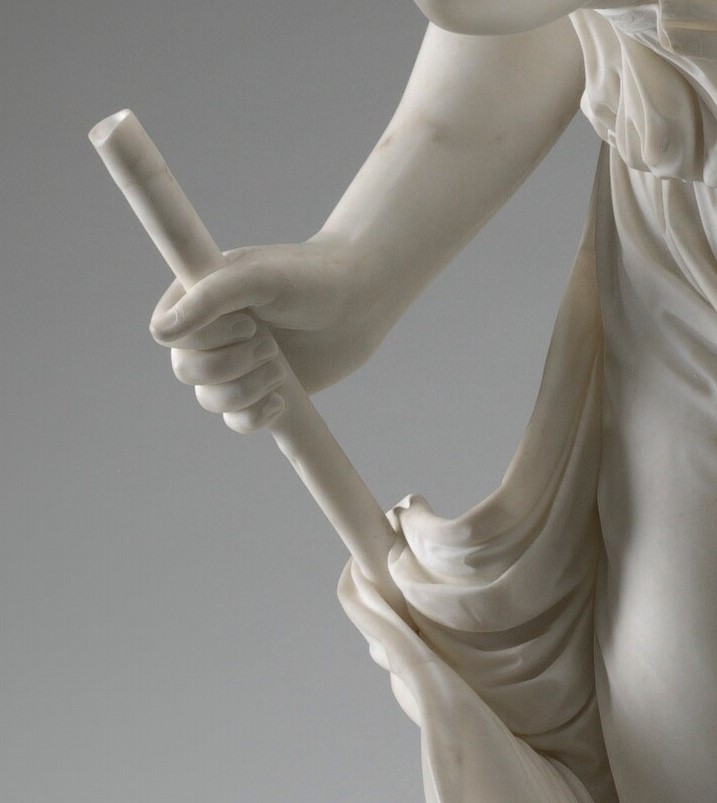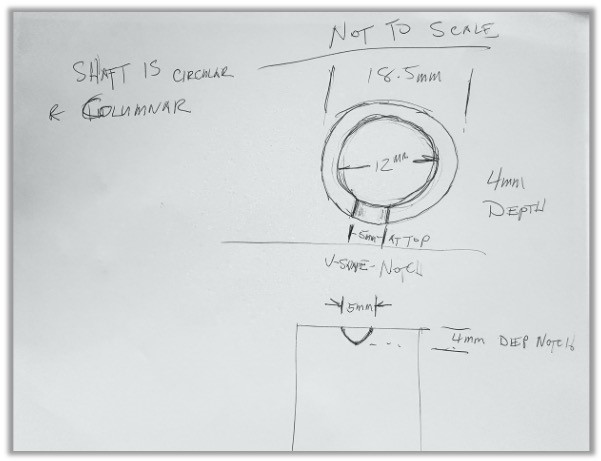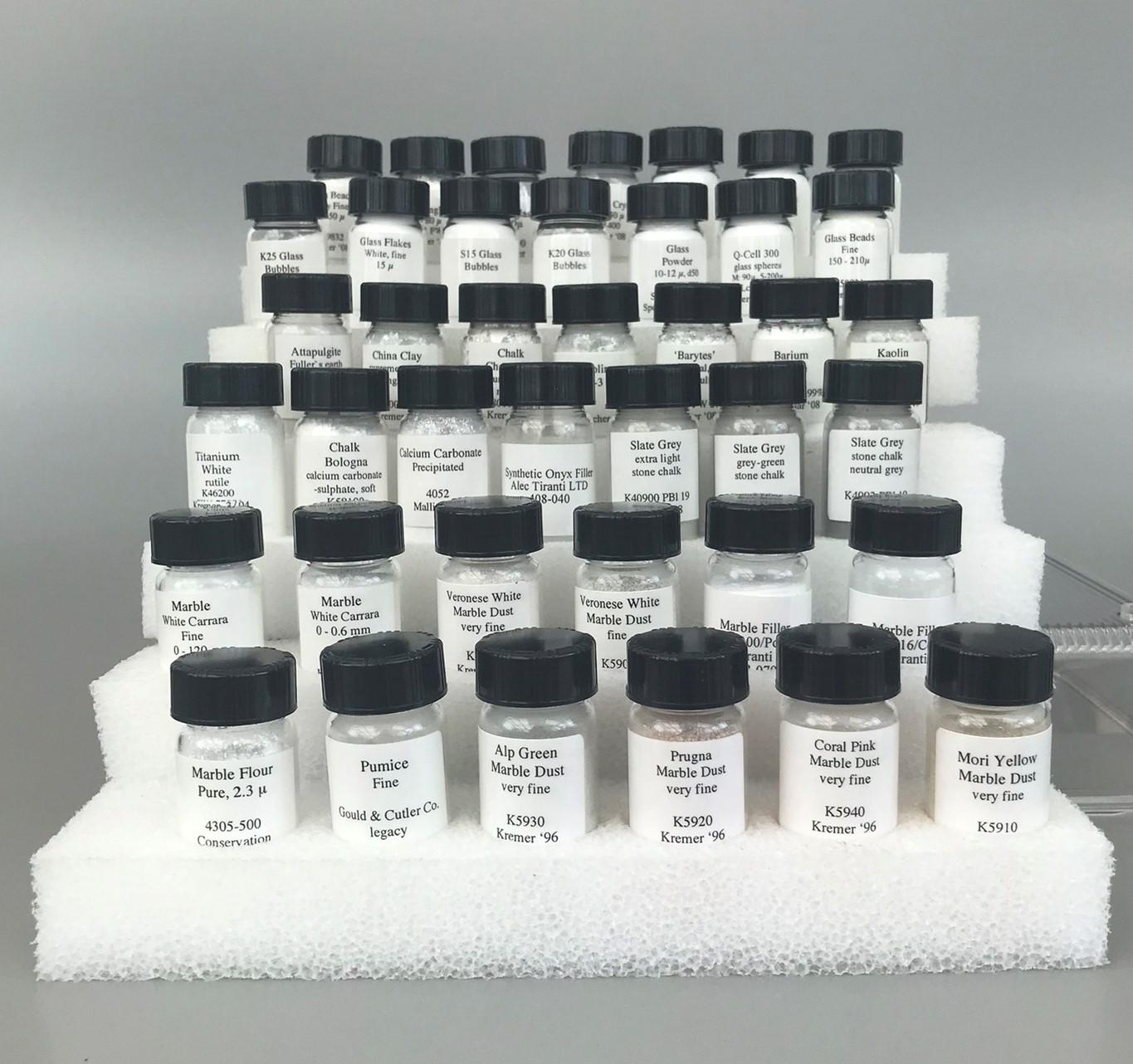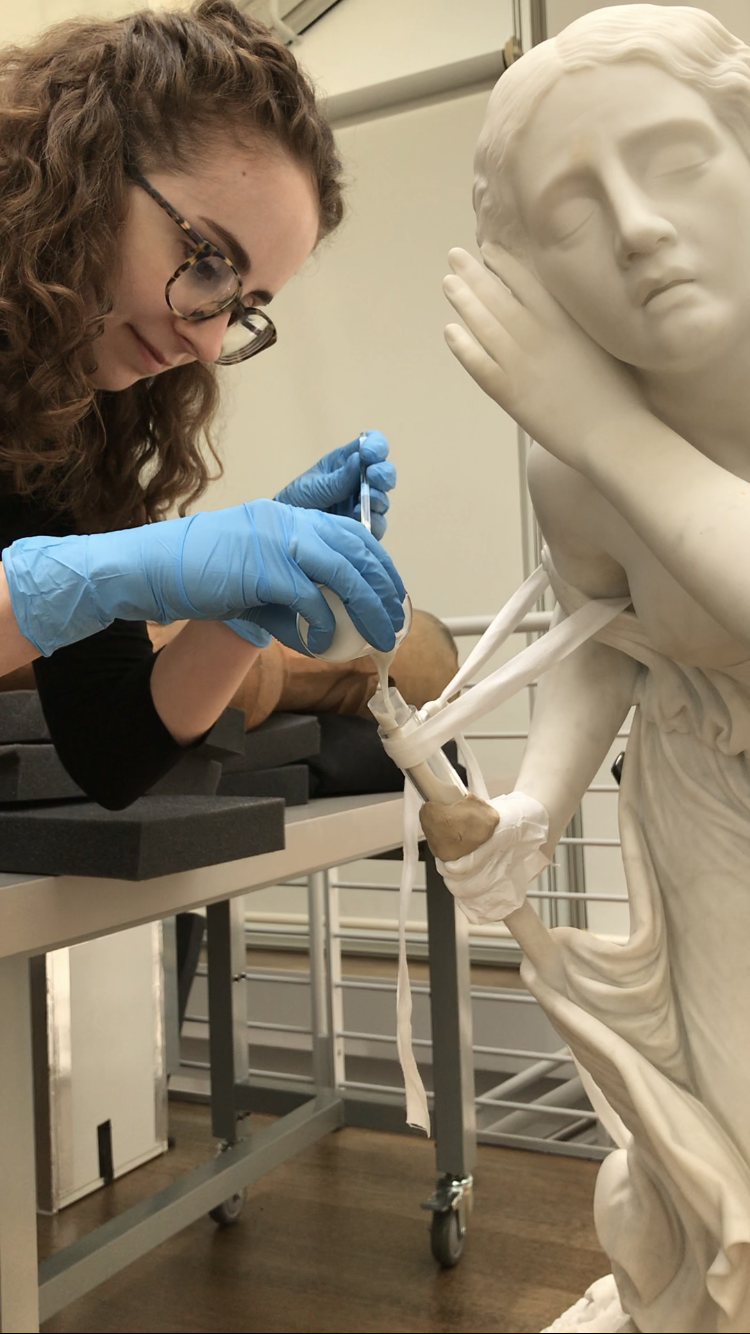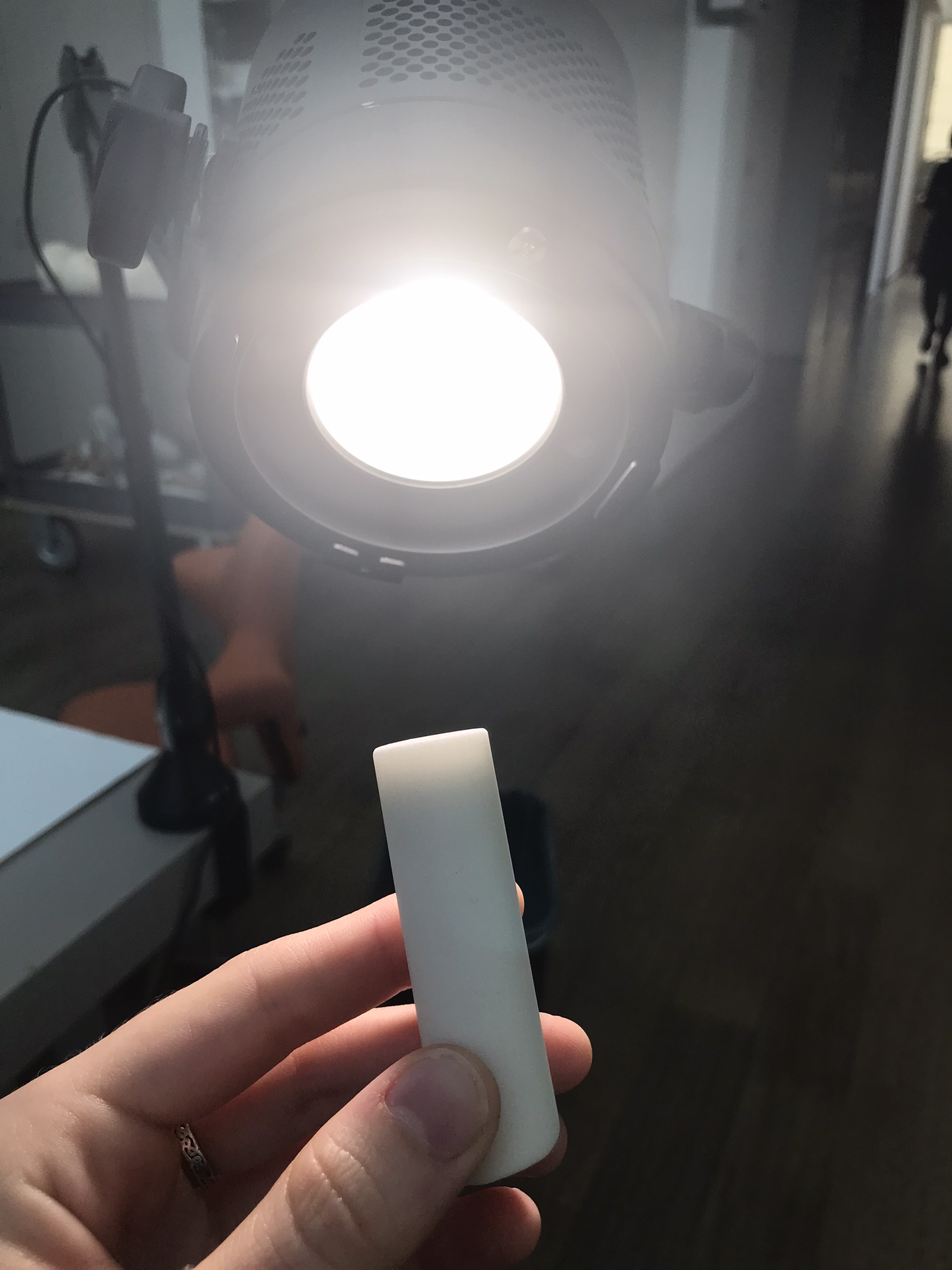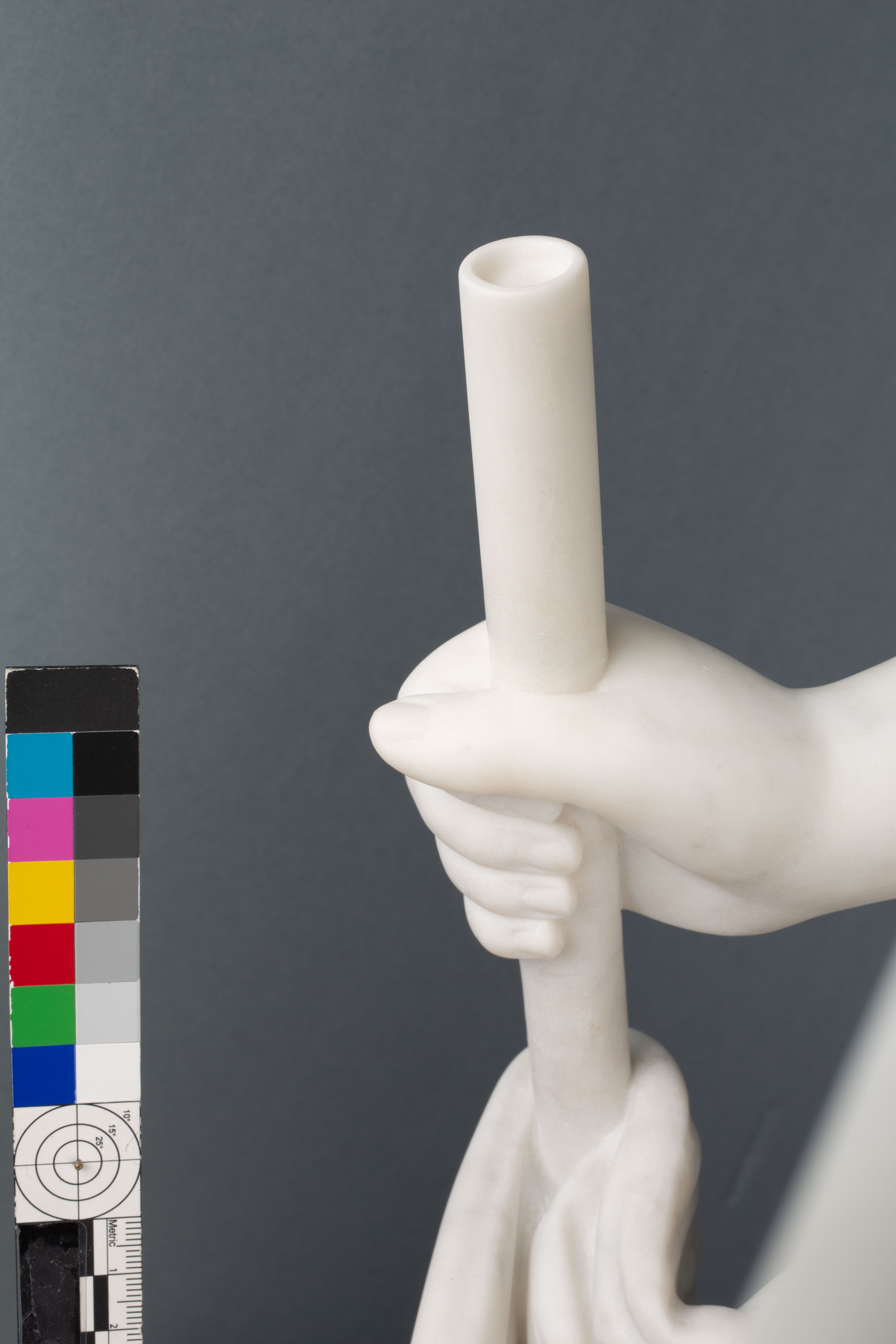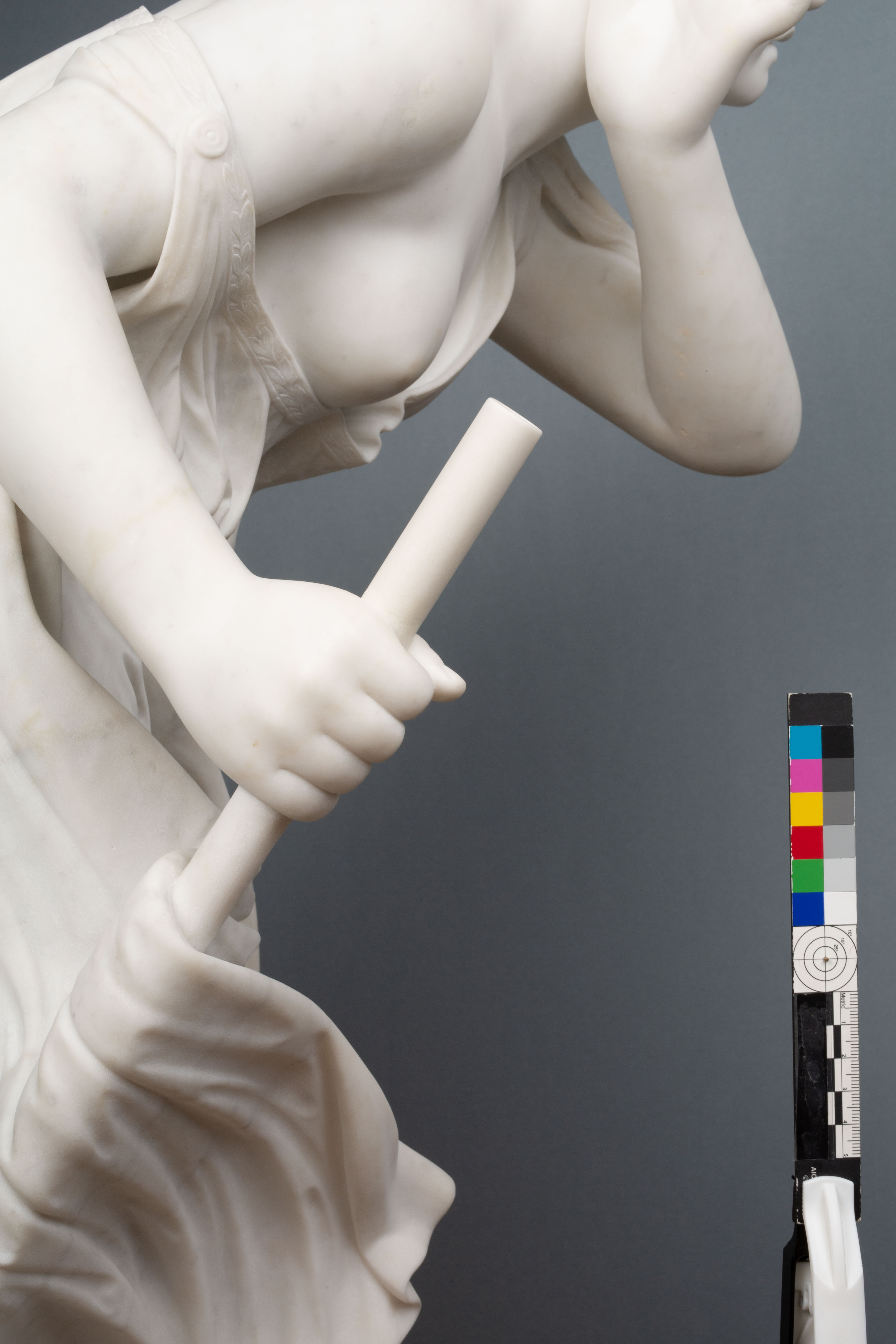When objects conservation fellow Adrienne Gendron set out to treat a famous 19th-century marble sculpture, she had to carefully consider her conservation approach. Should she leave a missing piece as is or reconstruct it?
The sculpture—Nydia, the Blind Flower Girl of Pompeii—references a character from a popular 19th-century novel by Lord Edward Bulwer-Lytton, The Last Days of Pompeii (1834). In it, an enslaved blind flower-seller named Nydia suffers from unrequited love for Glaucus, who purchased her from abusive owners to serve as a maid for his fiancée. The novel concludes with the eruption of Mount Vesuvius in 79 C.E. As Pompeii is blanketed under a dark cloud of ash, Nydia relies on her acute sense of hearing to lead Glaucus and his betrothed out of the burning city. After leading them to safety, she throws herself into the sea rather than continue to suffer from unrequited love.
The sculpture depicts Nydia leading the way through the streets of Pompeii as the volcano erupts, leaning heavily on a staff to drive her forward movement, while her windswept garments swirl around her. The Corinthian column capital at her feet symbolizes the ironic inversion of Nydia’s circumstances, in which she, as an enslaved blind woman, is elevated to a position of leadership and power amid the destruction of a great city.[1] In his sculpture, artist Randolph Rogers chose to depict Nydia at a crucial moment in the novel: when she becomes temporarily separated from Glaucus. After calling his name, she raises a cupped hand to her ear, listening for his reply. Her closed eyes allude to her blindness.
Rogers’s Nydias
American by birth, Randolph Rogers (1825–1892) lived in Italy most of his life. Like most sculptors working at the time, he did not execute his own works in stone; rather, he created intermediary versions in clay or plaster. Skilled Italian marble carvers then used a pointing machine to make detailed copies in marble.[2] Rogers completed the plaster version of Nydia in October 1855, and marble copies were made over the following decades. Nydia became Rogers’s most popular work and was exhibited in the 1876 Centennial Exhibition in Philadelphia. Nydia’s popularity was due in part to the rise of the abolitionist movement, which reignited interest in Bulwer-Lytton’s novel, as well as to a widespread interest in the city of Pompeii. Archaeological excavation of Pompeii began in the mid-18th century, and the ancient city’s destruction subsequently became a subject of fascination, particularly for artists throughout the 18th and 19th centuries.[3]
Rogers’s journals document the production of numerous Nydias between 1867 and 1891, many of which were commissioned by Americans for display in their homes. At the time, the sculpture was considered an unusual depiction of female empowerment and heroism and resonated with female audiences; notably, one-fifth of purchasers were women, a high number for this period.[4] Rogers’s sculpture was ultimately replicated 167 times in two sizes: a near life-size version and a reduced version.[5] An even smaller tabletop size was produced as well, perhaps at the same time as the larger ones. The Harvard Art Museums’ Nydia, made in 1859, is a reduced version, measuring about 36 inches high. Versions of Nydia are held in public collections throughout the United States. In fact, three versions are represented in the Boston area. In addition to the mid-size version at the Harvard Art Museums, there is a near life-size version at the Museum of Fine Arts, Boston, and a tabletop version at the Robbins Library in Arlington. Today, the sculpture continues to draw admiration for its dynamic movement and skillful rendering of the female form, though the character of Nydia is now the subject of scholarly criticism.[6] As an enslaved blind woman whose suffering and ultimate death are highly romanticized, she offers an opportunity to interrogate 19th-century conceptions of enslavement, disability, physical and sexual violence, and the gendered ramifications of ecological disaster.
